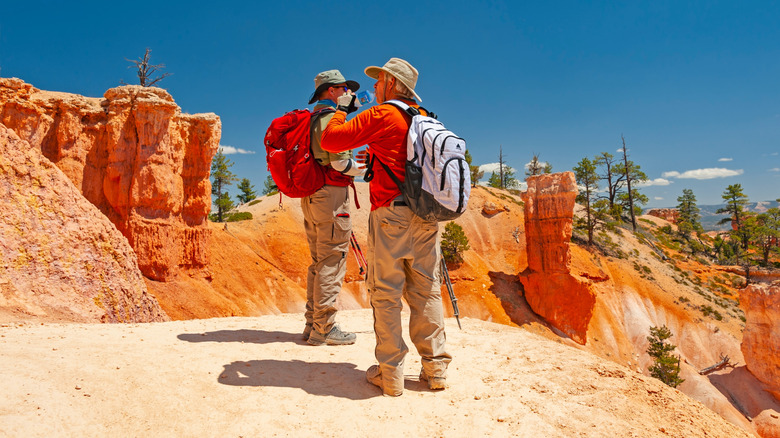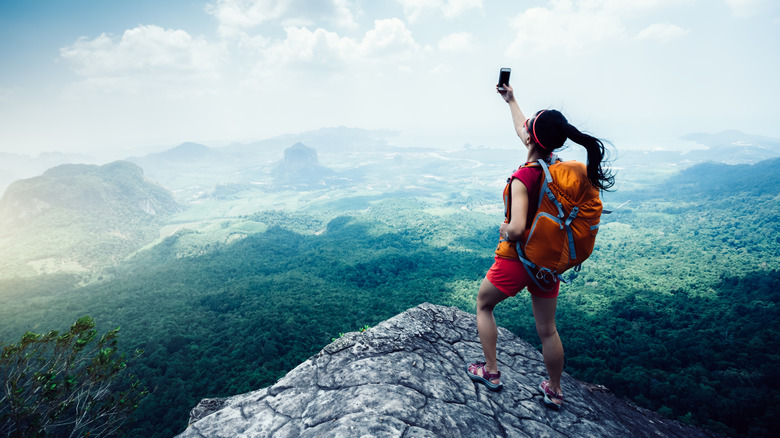This Dangerous Tourist Activity Is All Too Common, According To Park Rangers
National and state parks boast some of the best nature and wildlife a country has to offer. In order to protect the land, visitors often have rules to follow. These can include staying in designated tourist areas, keeping distance from endangered animals, or leaving banned video and photo devices at home. Such rules can be at odds with tourists who want creative photos. Park rangers lament that sometimes tourists go too far to get amazing backdrops for picture-perfect selfies. In the process, they end up breaking park rules and putting themselves in danger. This could be anything from ignoring signs to crossing safety barriers.
Park rangers spoke with U.K.-based travel blog Atlas and Boots to give insights on what they want people to know about their jobs. Aside from sharing how disheartening it is to see visitors leaving trash or otherwise harming the environment, they also emphasized that a cool selfie shouldn't come with potentially deadly risks. "Our motto is 'Protect the park from the people, the people from the park, and the people from the people.' Tragically, sometimes that means protecting you from yourself."
Tourists sometimes cross safety barriers just for a photo
It should go without saying that you should not take a selfie while standing on the edge of a cliff — or worse, dangling yourself off the cliff just for a cool photo — but plenty of adrenaline junkies try it. In 2018, a 19 year old died after taking photos on a cliff in New South Wales, Australia. The same thing happened in Yosemite National Park later that year (per BBC).
In a 2023 study, researchers from University of New South Wales, Australia called these risky outdoor selfies a "public health hazard," likening it to smoking cigarettes or riding a bicycle without a helmet. The researchers placed blame on social media, as people have a heightened desire to share exciting things online. You may not want to take a selfie at bodies of water and mountain peaks in particular, as these tend to see the bulk of photo-related accidents or deaths. As photogenic as these parts of national and state parks can be, use extra caution even if you don't take out your phone for a picture.

